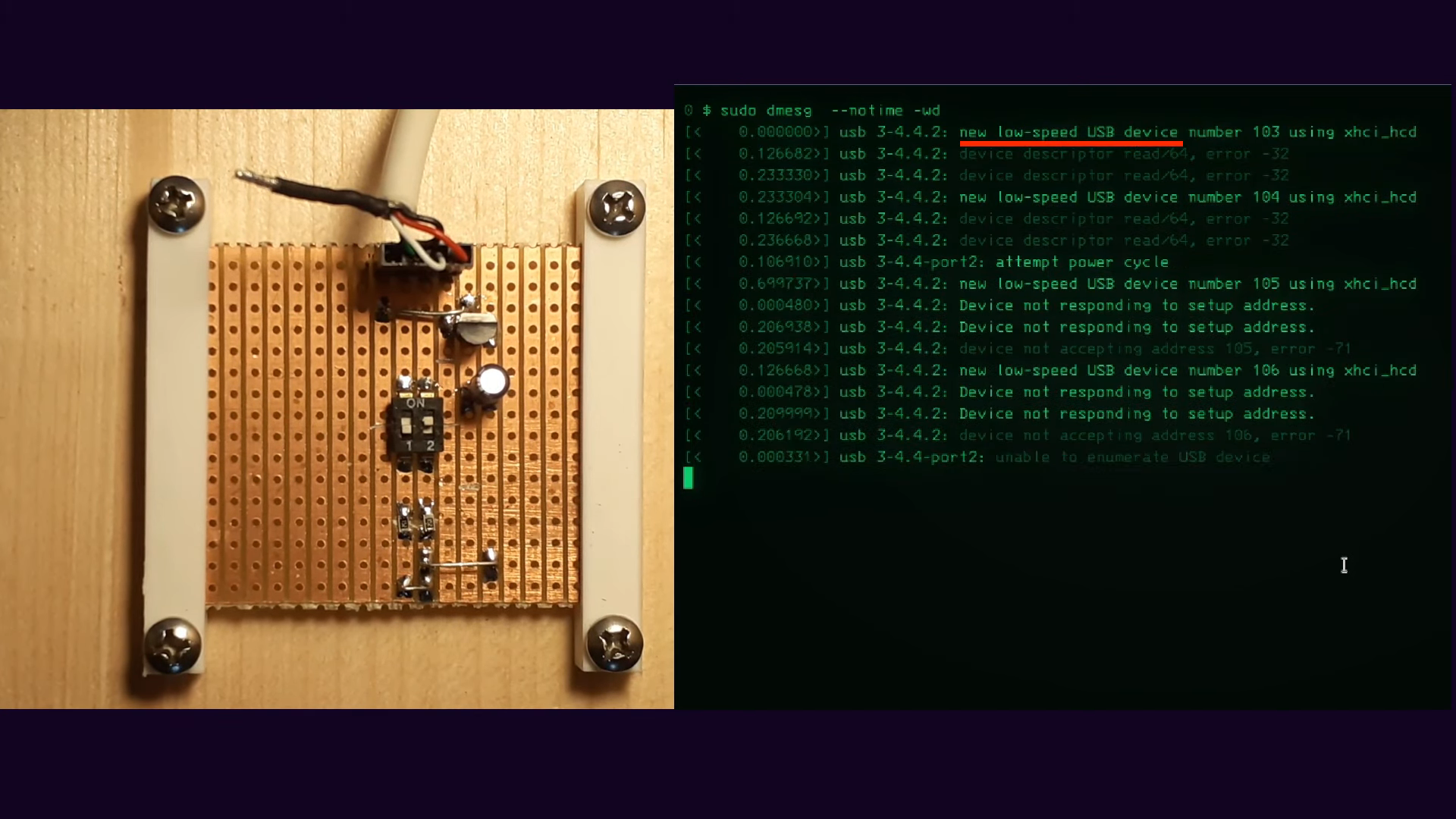
If you’re like most of us, your basic approach to building something boils down to: “What’s the minimum amount I need to do to get this to work?” It’s not a bad strategy in general, but the minimal build is rarely enough to meet all the requirements, as this extremely minimal but functional USB device illustrates.
Functional, yes, but as [TM] explains, only if you define functional as being recognized by your operating system. The BOM for that job turns out to be really small — a 3.3-volt regulator, its capacitor, and a pair of resistors connected to a DIP switch. The resistors, 1.5k each, are connected to the D+ and D- lines of the USB connector and pull their respective lines up to 3V3 when their switch is closed. If the D- switch is thrown, it indicates a low-speed connection is requested, while D+ requests a speedier connection. Either way, its enough to get the familiar “USB connect” sound in Windows, and to see it listed in Device Manager or dmesg on Linux.
With no microcontroller to return a device descriptor, not much else happens, of course, but it’s still interesting that so little is needed to at least get the host machine to know that something was plugged in. And that alone has some diagnostic value; as [TM] points out, you could use this circuit to test that the physical port on the host at least minimally works.
He runs through a few other potentially useful scenarios, but really, the best use of something like this is to educate yourself on the lowest levels of USB connection negotiation. If you want to dive deeper into USB-C specifically, we suggest you check out [Arya Voronova]’s “All About USB-C” series.
Source: https://hackaday.com/2023/05/09/minimal-usb-device-connects-with-just-a-couple-of-resistors/


